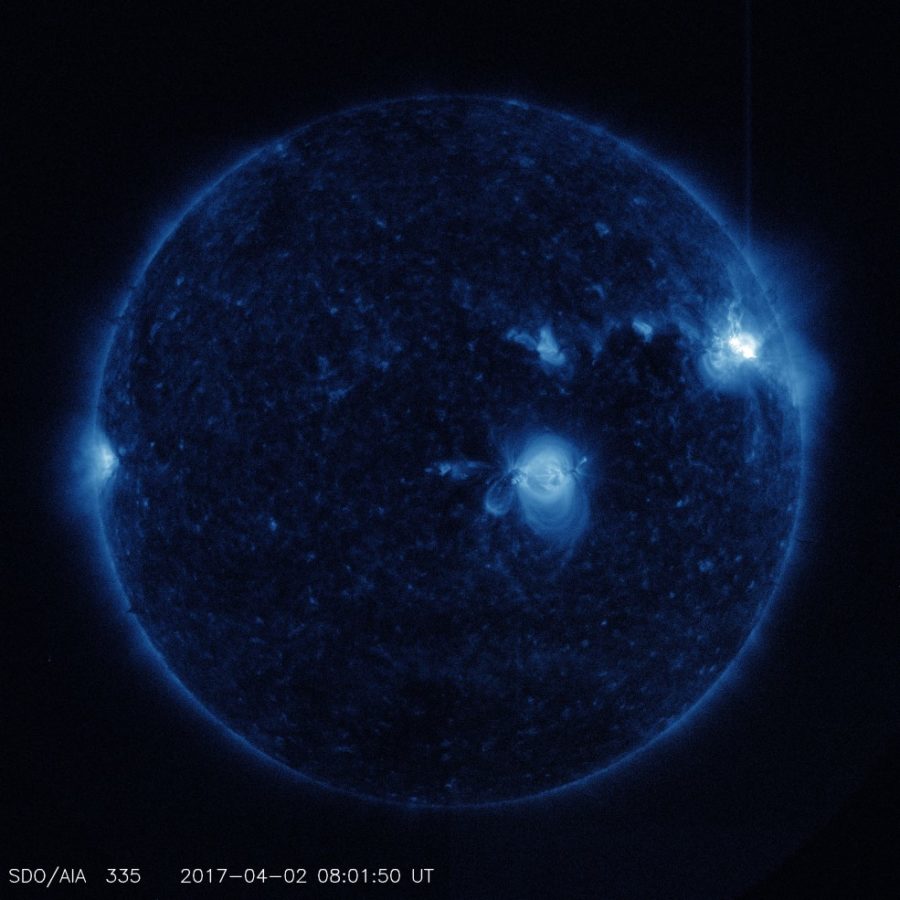NASA captures three powerful, consecutive Solar flares

EARLIER THIS WEEK, on 2 and 3 April, the Sun emitted three consecutive Solar flares, each stronger than the last, in a surprise increase in Solar activity.
Solar flares are powerful bursts of radiation which have the capacity to disturb GPS and satellite communications.
NASA‘s Solar Dynamics Observatory, which watches the Sun constantly, captured the three events in a stunning series of images. The first flare peaked at 4.02am EDT on 2 April, the second at 4.33pm EDT, 2 April and the third at 10.29am on 3 April.

The second Solar flare, peaking at 4.33pm EDT on 2 April 2017. (Image: NASA/SDO)
The flares classigied as M5.3, M.57 and M5.8 respectively. M-Flares are the second most intense classification – a tenth of the size of the most intense flares, which are called X-Class. The number provides information about the flare’s strength – M2 is twice as intense as M1, M3 is three times as intense, etc.
“Harmful radiation from a flare cannot pass through Earth’s atmosphere to physically affect humans on the ground, however – when intense enough – they can disturb the atmosphere in the layer where GPS and communications signals travel,” NASA said in its official statement released yesterday.

The third Solar flare, peaking at 10.29am EDT on 3 April 2017. (Image: NASA/SDO)
READ MORE:
- Six cosmic catastrophes that could end life on Earth
- Enormous Solar flares key to life on Earth
- First images from Sun’s edge reveal origins of Solar wind

